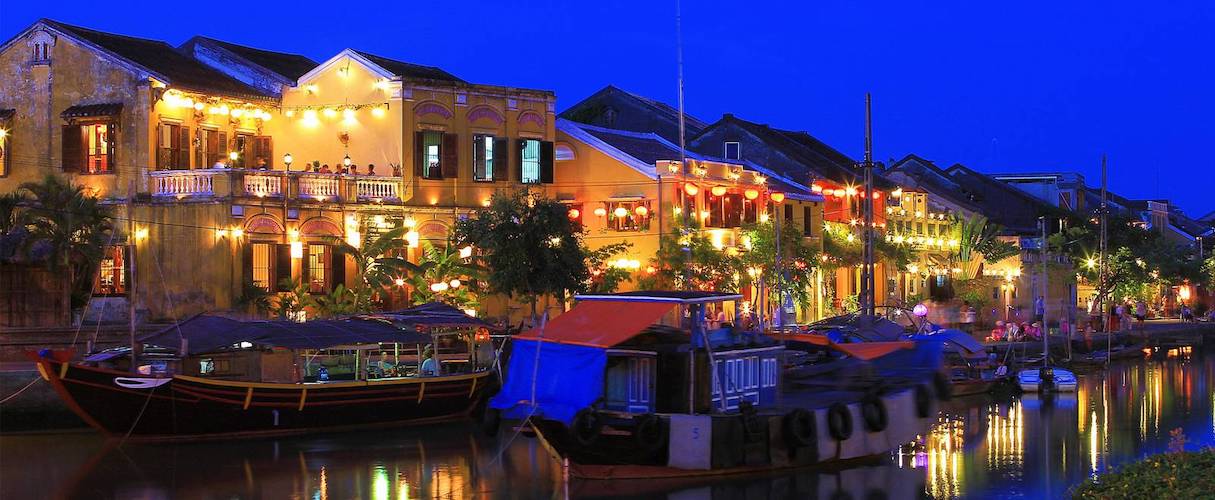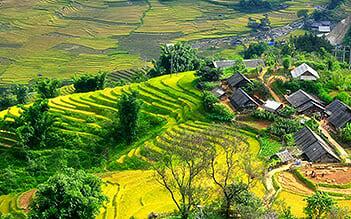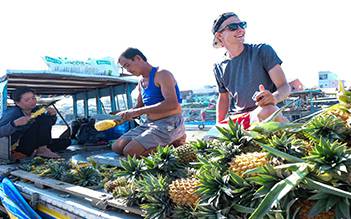Overview
400 years ago, Hoi An has been a crowded trading port for merchants from all over the world, creating a diverse culture that reconciles Oriental and Western Culture. Nowadays, Hoi An is one of the rare ancient cities which still preserved its most sacred treasure. In 1999, Hoi An was recognized as a World Heritage Site by UNESCO.
Hoi An tours is always the top choice for tourists in Vietnam for many reasons. This small town is an intersection of Oriental - Western Culture, the combination of the essence of Vietnam, China, Japan, and Europe in both the cuisine, architecture to the traditions of the local people.
Geographical location
Hoi An became a city in 2008 based on the entire natural area, population and administrative units of Hoi An city, with the total area of 6,146.88 ha.
When establishing the city, Hoi An has 13 administrative units, including 9 wards: Minh An, Son Phong, Cam Nam, Cam Pho, Thanh Ha, Tan An, Cam Chau, Cam An, and Cua Dai; 4 communes are Cam Ha, Cam Thanh, Cam Kim and Tan Hiep island commune - Cu Lao Cham.
Hoi An is located in the downstream area of Thu Bon River in the coastal plain of Quang Nam Province, 28 km south of Da Nang City.
- The East borders the South China Sea.
- The South borders Duy Xuyen District.
- The West and North borders Dien Ban District.

The peaceful scenery of Hoi An
The best time to visit Hoi An
On 14th lunar of every month, the ancient town is lit with sparkling and colorful lanterns. On that day, the old streets and two sides of the Hoai River are filled with the melodies of traditional songs, folk games, and indispensable traditional dishes.
From February to April: It is in the dry season when the weather is cool and pleasant. Tourists come here with their families and friends to enjoy the holidays together, sip a few cups of tea, stroll around the old streets and enjoy the special food of Hoi An.
From May to July: It is near the end of the dry season which is very suitable for tourists to enjoy beautiful beaches such as Cu Lao Cham, An Bang beach and Cua Dai beach.
From October to December: This time is in the rainy season so visitors can take a boat along the river and admire the peaceful streets. But you should also consider when going at this time when it rains a lot. Visitors should bring an umbrella or raincoats along.
How to travel around Hoi An
You can visit Hoi An by taxi, motorbike, bicycle, cyclo or on foot. If you use a motorbike, get to clearly know the streets that have a strictly prohibitive time to avoid motorcycles.
In the evening, you can take a walk to enjoy the tasty street food or take a cyclo along the Thu Bon River to see the magnificent beauty of Hoi An at night.

The Cau Temple
Where to stay in Hoi An
Luxurious hotels
- Hoi An River Town Hotel
- Lasenta Boutique Hotel Hoian
- Hoi An Odyssey Hotel
- Golden Holiday Hotel & Spa
- Aurora Riverside Hotel & Villas Hoi An
- Hoian Sincerity Hotel & Spa
Luxurious resorts
- Hoi An Ancient House Village Resort and Spa
- Tropical Beach Hoi An Resort
- Green Heaven Resort & Spa
- Sunrise Premium Resort Hoi An
- Victoria Hoi An Beach Resort & Spa
- Silk Sence Hoi An River Resort

Victoria Hoi An Beach Resort & Spa
Budget hotels
- Santa Sea Villa
- Hoian Central Hotel
- ZEN Boutique Hoi An
- KA Villa Hoi An
- Dai An Phu Villa
- Hoi An Four Season Villa
The must-see attractions in Hoi An
Famous assembly halls
- Phuc Kien Assembly Hall (46 Tran Phu)
- Quang Dong Assembly Hall (176 Tran Phu)
- Trieu Chau Assembly Hall (157 Nguyen Duy Hieu)
- Duong Thuong Assembly Hall (64 Tran Phu)
- Hai Nam Assembly Hall (10 Tran Phu)
Top ancient houses
- Quan Thang Ancient House
- Tan Ky Ancient House
- Phung Hung Ancient House
- Duc An Ancient House
- Diep Dong Nguyen Ancient House
Other tourist spots in Hoi An
- Bridge Temple
- Tra Que Vegetable Village
- Thanh Ha Pottery Village
- Cu Lao Cham
- Cua Dai Beach
- An Bang Beach




